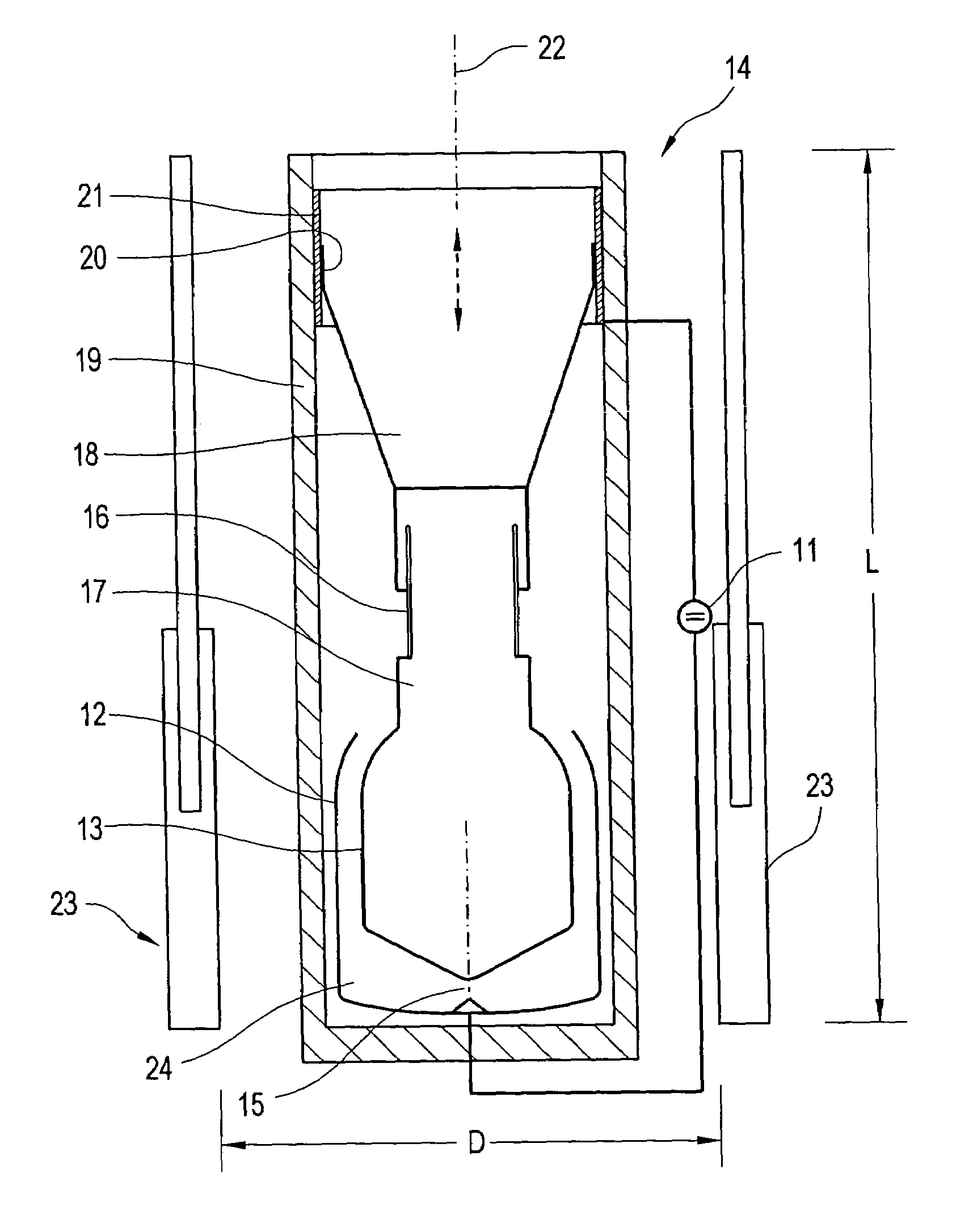Microwave generator with variable frequency emission
a generator and variable frequency technology, applied in the direction of oscillator generators, pulse generators, pulse techniques, etc., can solve the problems of affecting the efficiency of the generator, the interference of the input side, and the matched electronic circuit with physical structure, so as to achieve the effect of reducing the interference and facilitating the matched
- Summary
- Abstract
- Description
- Claims
- Application Information
AI Technical Summary
Benefits of technology
Problems solved by technology
Method used
Image
Examples
Embodiment Construction
[0012]The capacitance, which is charged from a high-voltage DC generator 11, between the tubular outer electrode 12 and the inner electrode 13, which is in the form of a bottle, of the coaxially formed microwave generator 14 is discharged at the free end of the inner electrode 13 via a spark gap 15, whose short-circuiting results in the behaviour of a quarter-wave resonator 24. This discharge leads to a rapidly rising and highly oscillating discharge current as well via a coupling piece 16 between the bottle neck 17 and the antenna 18, which widens in the form of a funnel, in the tubular surrounding housing 19. The bandwidth of the emission and the pulse length of the discharge current are governed primarily by the axial length of this conical antenna 18. The median frequency in the emitted spectrum is governed primarily by the length of the coaxial resonator 24 in the form of the concentric electrode pair 12-13, although the length dimensions of the bottle neck 17, of the coupling ...
PUM
 Login to View More
Login to View More Abstract
Description
Claims
Application Information
 Login to View More
Login to View More - R&D
- Intellectual Property
- Life Sciences
- Materials
- Tech Scout
- Unparalleled Data Quality
- Higher Quality Content
- 60% Fewer Hallucinations
Browse by: Latest US Patents, China's latest patents, Technical Efficacy Thesaurus, Application Domain, Technology Topic, Popular Technical Reports.
© 2025 PatSnap. All rights reserved.Legal|Privacy policy|Modern Slavery Act Transparency Statement|Sitemap|About US| Contact US: help@patsnap.com


